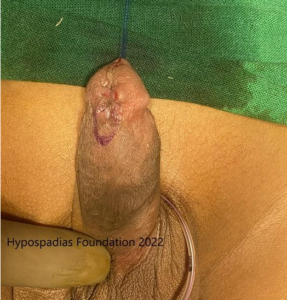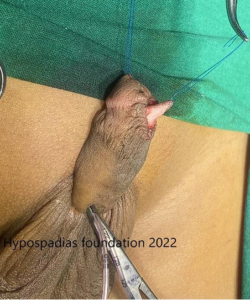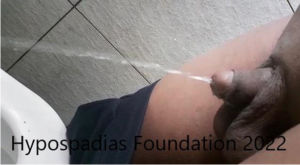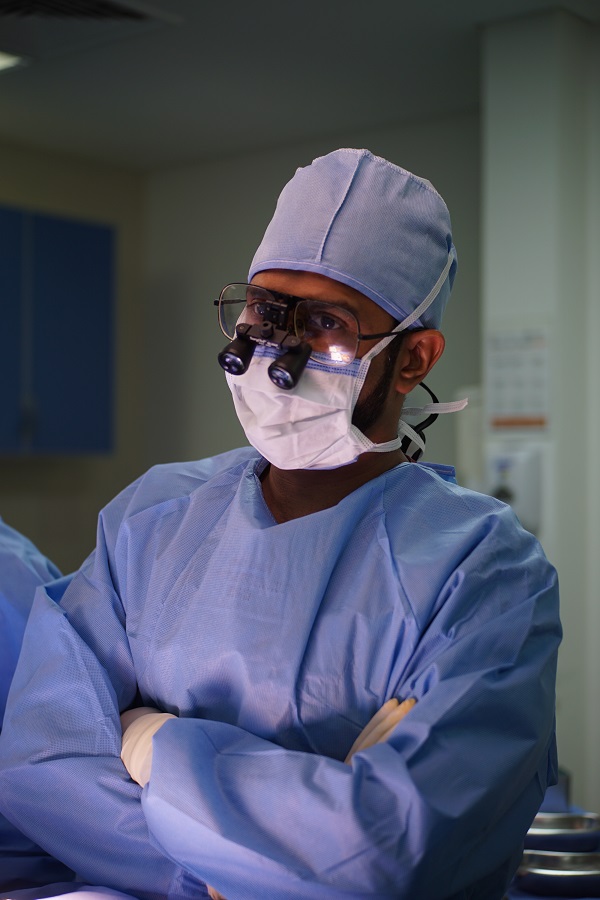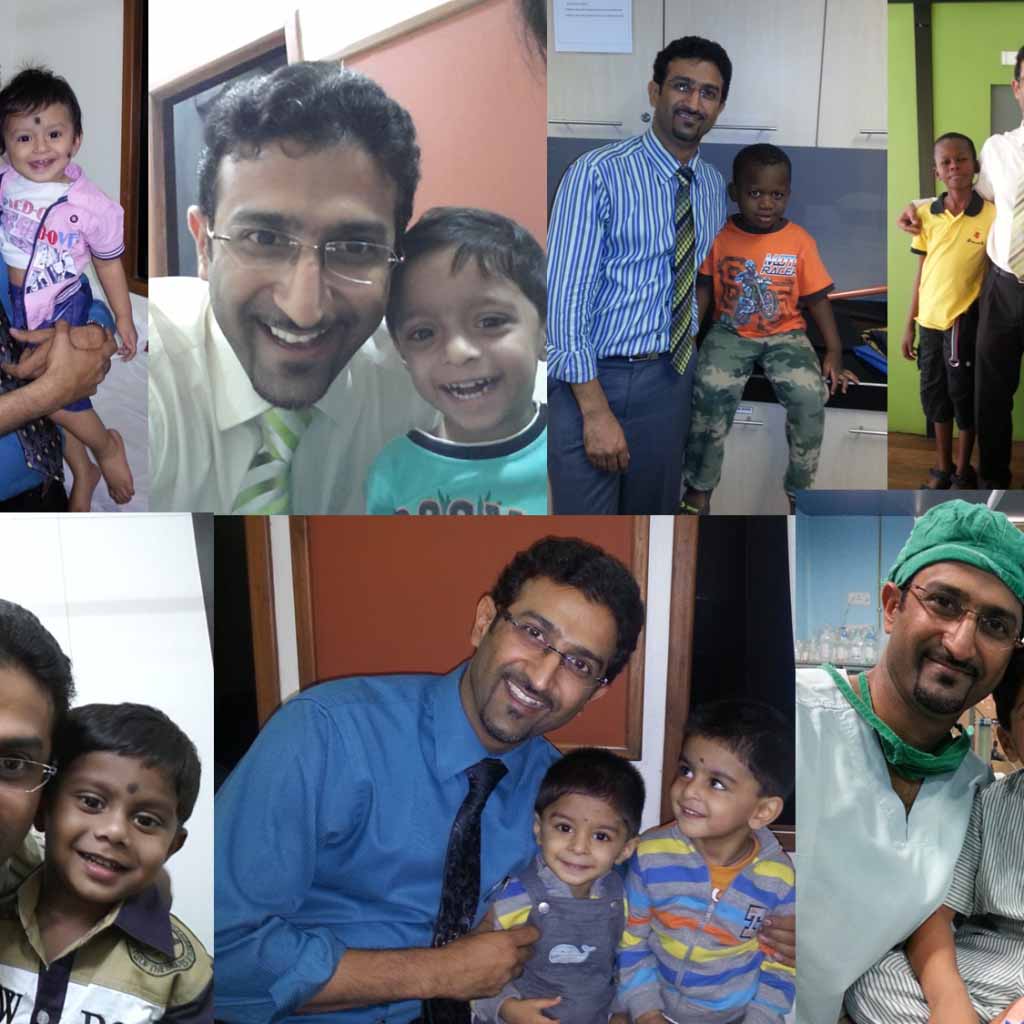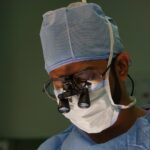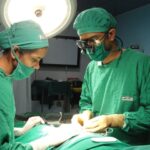5-year-old boy with distal penile hypospadias, had undergone two surgeries somewhere else and came to Hypospadias Foundationnted with complaints of difficulty in passing urine from the meatus and urine leak from the distal penile region. On clinical examination, there was residual chordee, fistula in the distal penile region and penile torsion to the right.
At our centre, he was planned for cystoscopy, chordee assessment and single or two stage repair based on the cystoscopy findings. On cystoscopy, we found stricture of length 1.5cm in the distal urethra (beyond the site of fistula) and normal proximal urethra.
As a first step, the penis was degloved. Fibrotic bands were released during degloving. Chordee was assessed by artificial erection test and no chordee was noted. The dorsal penile skin (residual prepuce) looked healthy with preserved vascularity. Hence, we planned to go ahead with the urethroplasty in single stage using an onlay flap from this residual prepuce.
15x8mm flap along with the good vascular dartos tissue was raised from the dorsal side. Flap was rotated around the side of the penis and brought to the underside of the penis for urethroplasty. Urethroplasty was done using 6-0 PDS over a 7Fr infant feeding tube. Dartos tissue was fixed on either side to cover the urethroplasty. Glans wings were raised widely and glansplasty done using 6-0 PDS. Excess skin was trimmed on the right lateral side and repositioned to correct the penile torsion and to achieve a better cosmetic result.
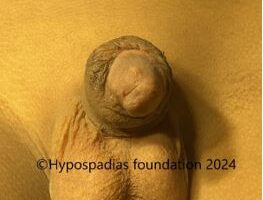
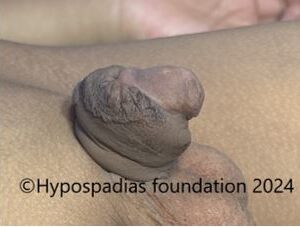
Pic 1: Preoperative assessment shows penile torsion to the right and mild residual chordee
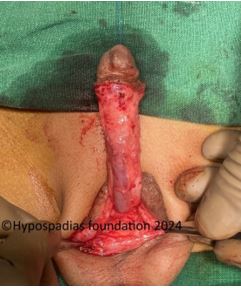
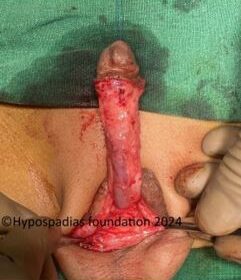
Pic 2: Complete degloving done, artificial erection test showed no chordee
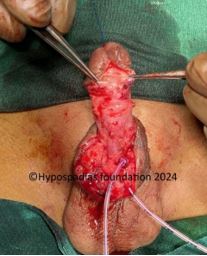
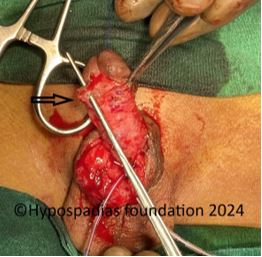
Pic 3: Scarring noted in the urethral plate and fistula tract identified
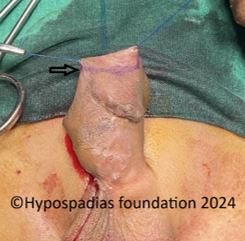
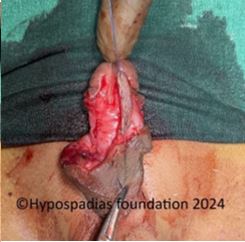
Pic 4: Marking of the prepucial flap and prepucial flap raised preserving the vascularity

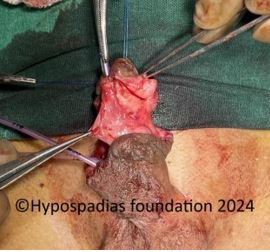
Pic 5: Glans wings widely raised and Onlay flap urethroplasty done over 7Fr IFT with 6-0 PDS
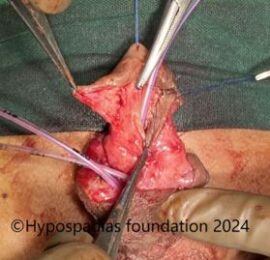
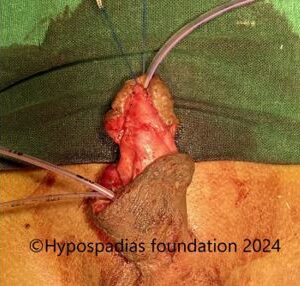
Pic 6: Onlay flap urethroplasty done over 7Fr IFT with 6-0 PDS and dartos flap spread fixed on either side
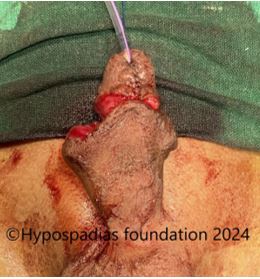
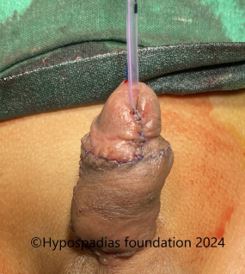
Pic 7: Skin rearranged and sutured in 2 layers using 6-0 PDS and 6-0 vicryl rapide
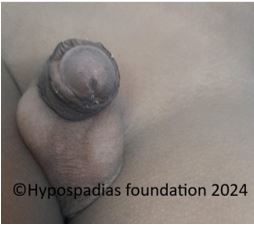
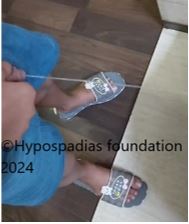
Pic 8: Post operative cosmetic outcome at 2 months after surgery- passing urine in single straight stream with no leak
Single stage hypospadias repair in a child using onlay flap from residual prepuce after previous failed surgeries
Hypospadias is a birth defect in boys where the urinary opening is on the underside of the penis. One of the popular techniques used for hypospadias repair is a Prepucial Onlay Flap urethroplasty. In this surgery, a well vascularized flap is raised from the dorsal prepuce and used to reconstruct the urethra.
This technique can also be used in failed hypospadias in the presence of residual prepuce and with no or minor chordee. The success rate of onlay flap in a failed hypospadias varies depending on several factors including the severity of the hypospadias, the surgeon’s experience, vascularity of the penile skin etc. During the surgery, flaps must be carefully raised preserving the vascularity otherwise there is risk of flap necrosis and complete dehiscence. Post surgery dressing should not be tight because it can cause compression of the flap and compromise the vascularity. This repair has good outcomes when performed by an experienced hypospadias surgeon.
If your child has undergone prior hypospadias repairs and developed a complication, then do consult an expert hypospadias surgeon for your child. Discuss the best options for your child and take an informed decision from the best in the field of hypospadias.
About Hypospadias Foundation
Hypospadias Foundation is a centre specialized for treatment of children with hypospadias. Our expertise in hypospadias makes us one of the best centres for hypospadias repair in the world. We treat children from more than 25 countries in the world and from all over India. Our dedication in this field has helped us achieve excellent outcomes. Hypospadias foundation is located at MITR Hospital in Kharghar, Navi Mumbai in the state of Maharashtra.
Dr A K Singal is an expert and top hypospadias surgeon in India. He is a gifted surgeon and his expertise in this area has helped us achieve excellent outcomes in primary and failed hypospadias in children as well as adults.
Dr Ashwitha Shenoy is an expert hypospadias surgeon with special interest in hypospadias and pediatric urology. Both Dr Singal and Dr Shenoy work together to give best results for hypospadias surgery in India for both children and adults.




